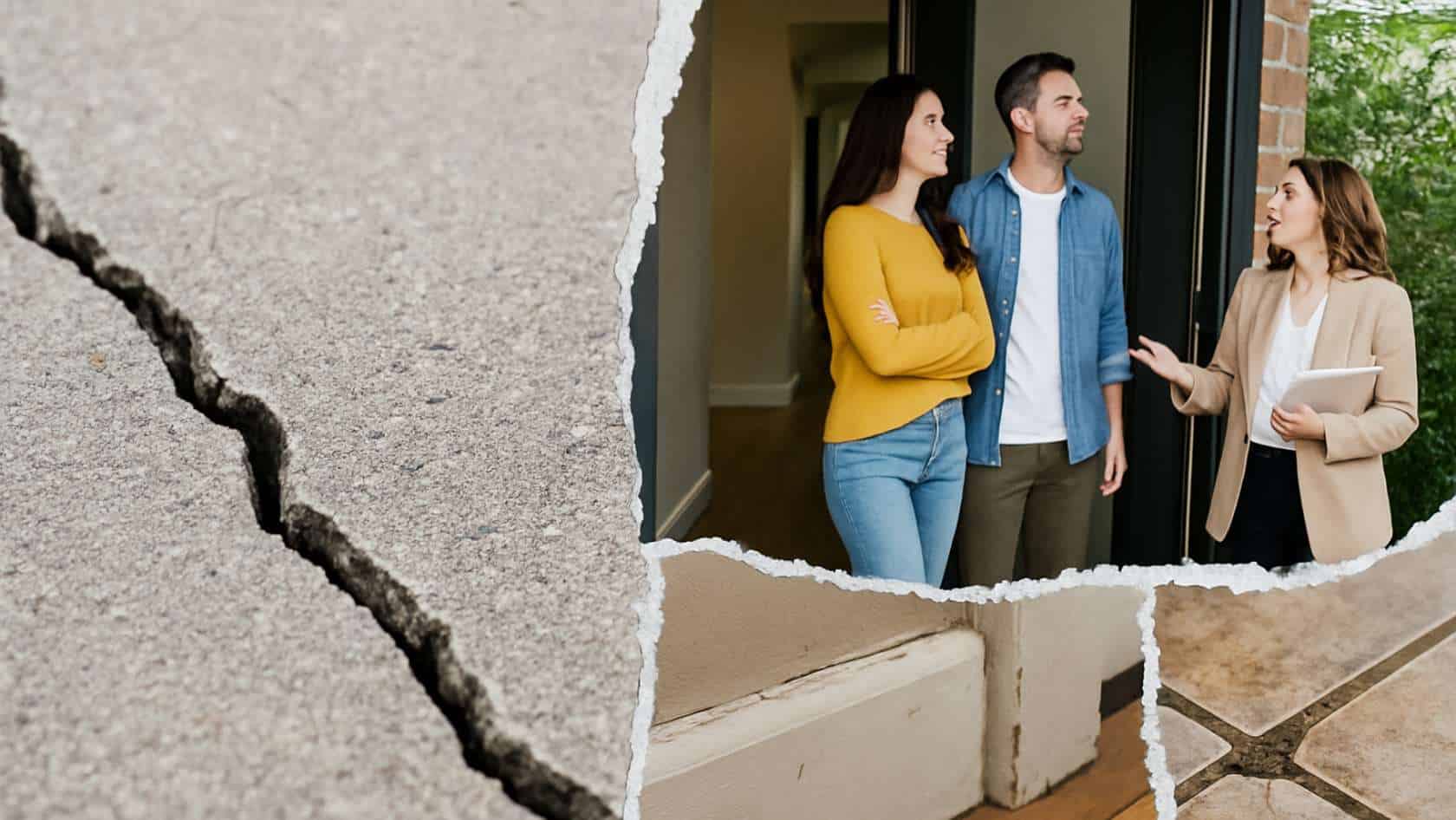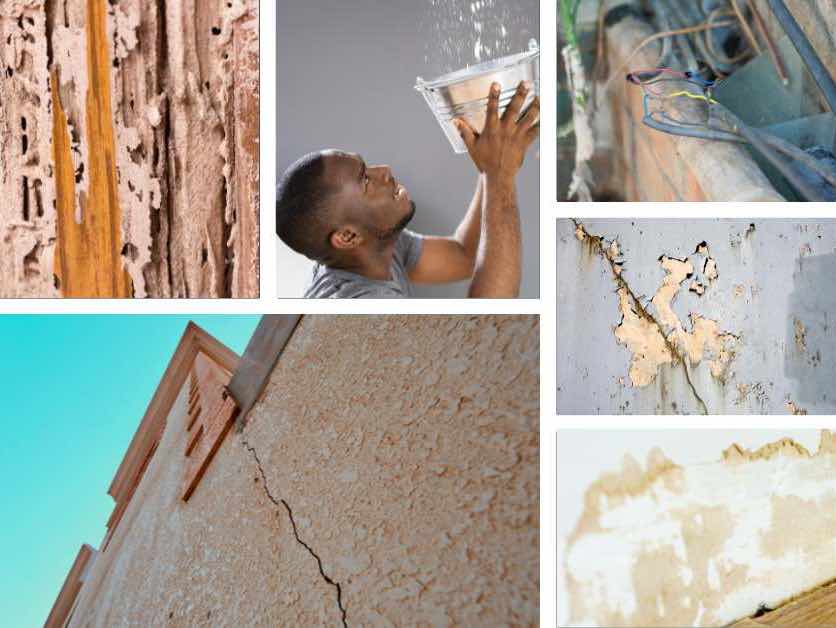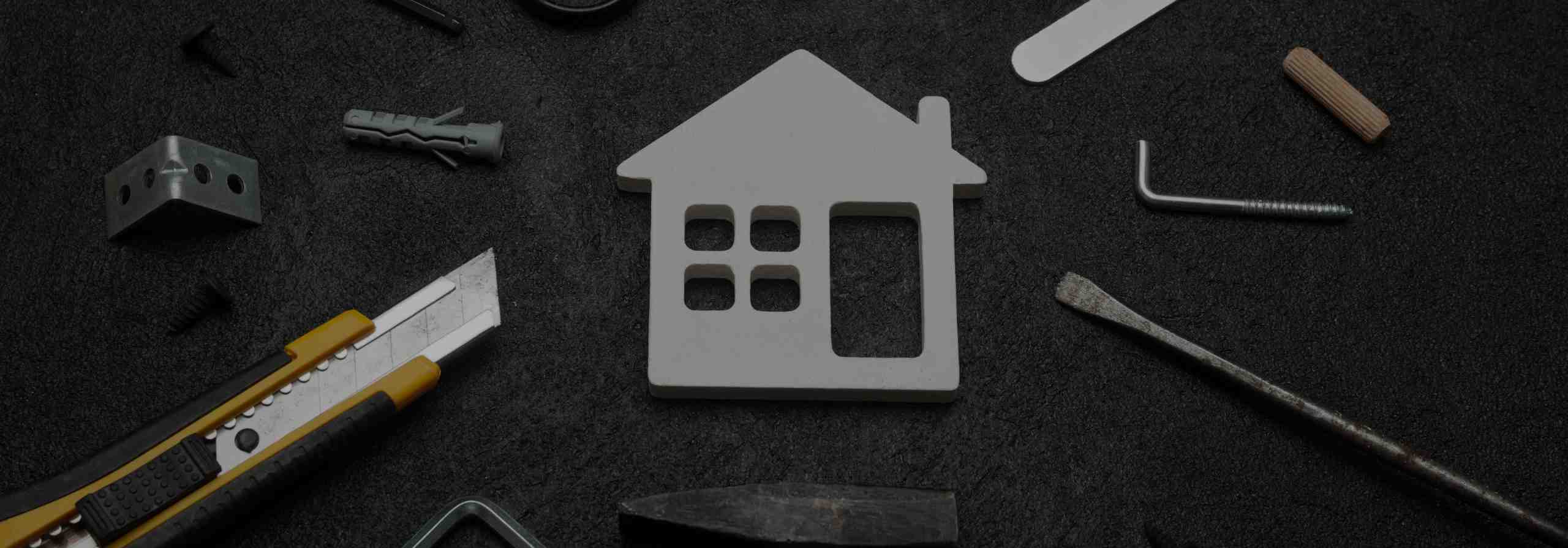The Smart Seller's Guide: Focus on What Truly Matters to Home Buyers

Introduction: The Seller's Dilemma
When you decide to sell your home, something strange happens. Suddenly, that hairline crack in the guest bathroom tile you've ignored for years becomes all you can see. The slightly faded patch of carpet near the window seems to scream for attention. The outdated light fixture in the hallway that never bothered you before now feels like a glaring flaw that could tank your home's value.
Welcome to what I call "seller's vision" – a condition where normal, lived-in details of your home transform into perceived deal-breakers overnight. Or, you might not have noticed any of these flaws, but your REALTOR® sure did.
Just like with smells you've gotten used to in your own home, sometimes called "nose blind", you can become "house blind" to different flaws you've lived with for years. An example is a beautiful Scottsdale townhouse I sold years ago. It was about as perfect as it could be - until you stepped into the otherwise lovely and expansive primary bedroom. All of the furnishings in this home were stylish, neat, and clean. But the primary bedroom's bedspread was ratty, faded, and old-looking.
When I stepped into the en suite bathroom, I could see a very dirty smudge around the light switch. The rest of the house was super clean, and they even had a toddler. I was almost embarrassed to point these 2 silly things out to them, but they were thankful. I told them not to spend a lot of money on a bedspread. So they went to Target and bought a simple white comforter, and they were amazed at what a difference it made in freshening up the room.
I've worked with countless homeowners who have spent thousands on unnecessary fixes before listing their homes, only to discover that buyers didn't care about most of those "flaws" at all. Many even preferred to make their own choices on certain updates rather than paying for the sellers' recent improvements.
The truth is refreshingly simple: buyers don't see your house the way you do. And understanding this difference in perspective can save you significant time, money, and stress when preparing to sell.
The Psychology Behind "Seller's Vision"

Why do we suddenly become hypercritical of our homes when preparing to sell? Psychologically, it makes perfect sense. Your home represents not just a financial investment but years of your life. You know its quirks intimately – which floorboard creaks, which cabinet sticks slightly, which window gets drafty in winter.
This familiarity creates a form of emotional ownership over even the tiniest imperfections. You might think, "I should have fixed that years ago," attaching guilt or regret to these minor flaws.
Additionally, the stakes feel high. You want the maximum return on your investment, and it's easy to believe that absolute perfection is the only way to achieve that. The reality is much more nuanced.
With that said, many home sellers refuse to acknowledge these issues, thinking "the buyer will fix them themselves." They might be correct, read on to find out.
Seeing Through a Buyer's Eyes

First-time buyers walk through your home with completely fresh eyes. They're not comparing your baseboards to how they looked five years ago – they're comparing your entire home to the last five properties they visited today.
Buyers are making big-picture assessments:
- Does this home feel well-maintained overall?
- Can I see myself living here?
- Does it meet my core needs for space, location, and function?
- Does it feel like a good value compared to other homes I've seen?
They're not creating a mental punch list of every minor imperfection. In fact, most buyers expect to find some evidence that the home has been lived in. A house that feels too perfect can sometimes come across as sterile or lacking character.
With that said, the home inspection might come up with a long list of small repairs needed. First-time buyers can get very nervous once they see the inspection report. If you know of specific repairs that need to be done, such as foundation, HVAC, roof, plumbing, etc., you should probably make these fixes prior to listing. These items might not just scare first-time buyers off.
What Buyers Will Typically Overlook

Let's get specific about what typical buyers won't lose sleep over when viewing your home:
Normal Wear and Tear: Light scratches on hardwood floors, minor dings in walls, slightly worn carpet in high-traffic areas – these are all expected in a lived-in home. Buyers understand that houses age, just like everything else.
Cosmetic Outdated Features: While design shows might make it seem like everyone demands the latest trends, many buyers are perfectly comfortable with:
- Bathroom or kitchen fixtures that aren't the latest style but work well
- Cabinet colors that aren't currently trending
- Perfectly functional countertops that aren't quartz or granite
- Light fixtures that aren't Instagram-worthy but provide good lighting
Minor Landscape Imperfections: A few weeds, a patch of lawn that's struggling, or garden beds that aren't magazine-perfect are rarely deal-breakers. Basic neatness counts more than perfection. I've seen many house flippers that do a great job on the interior of the house, and even the exterior of the home itself, but leave the yard as it was, especially the backyard. They might spiff up the front to create a good first impression, but the backyard is where they draw the line.
Older But Functional Systems: If your HVAC system, water heater, or appliances are older but in good working condition, most buyers won't expect brand new replacements. They care more that these systems function reliably than their exact age. There will be the occasional buyer who gets freaked out at the home inspection when they're told the HVAC system is 25 years old, even if it's still working. That's where negotiation needs to occur, depending on how the contract is written. In IL, the contract states that age is not a factor as long as the item is working properly and isn't causing a health hazard. I wish our AZ contract was worded that way.
Everyday Quirks: That door that needs a slight lift to close properly, the bathroom fan that's a bit noisy, or the cabinet drawer that requires a special touch – many buyers view these as normal character elements of an existing home.
Decorative Choices: While neutral is generally safer for selling, buyers can look past paint colors, wallpaper, or decorative choices that don't match their taste. They know these are easily changeable elements. However, most buyers don't want to have to paint immediately after moving in, so if you have some vivid colors throughout the home, you might want to neutralize. If you opted out of painting, you might need to do it after all if the feedback keeps mentioning your color choices.
Fun story: I was working with a middle-aged couple who looked at 13 similar styled homes, all split levels. I can usually tell people's tastes, and I had them marked as liking country-style decor. Boy, was I wrong! The 13th house we viewed was styled with brass and glass - very modern at the time. There were gold mylar vertical blinds that they loved. They wanted that house. I laughed and told them that they looked at 12 other homes that were the same style, and they were choosing this one just because of the decor and furnishings - and they wouldn't be getting the furniture. But they reminded me that the blinds were staying.
Small Cracks: Hairline cracks in drywall, minor settlement cracks in the driveway, or small grout cracks in tile are typically viewed as normal settling that happens in any home.
Remember that many buyers actually want to put their personal stamp on their new home. They might prefer selecting their own backsplash or paint colors rather than paying extra for your recent updates that don't match their taste.
What Buyers Won't Ignore: The Real Deal-Breakers

While buyers can be forgiving about cosmetic issues, certain problems will raise serious red flags:
Structural Concerns: Evidence of foundation issues, significant settling, or major cracks can send buyers running. These suggest expensive, complicated repairs that could affect the home's safety and value.
Water Problems: Few things scare buyers more than water damage. Stains on ceilings or walls, musty odors, or evidence of flooding signal potential mold, rot, and ongoing issues. Even if resolved, documented water problems can make buyers nervous.
Roof Issues: A visibly failing roof is an immediate concern for buyers, as it represents a significant upfront expense and potential for interior damage.
Electrical Safety Hazards: Exposed wiring, overloaded panels, amateur DIY electrical work, or non-functioning circuits aren't just cosmetic problems – they're safety concerns that can affect insurability.
Plumbing Failures: Low water pressure, slow drains, leaking fixtures, or evidence of pipe problems suggest expensive repairs and potential for water damage.
Environmental Concerns: Evidence of pests, mold, radon, asbestos, or lead paint will rightfully concern buyers, especially those with children or health sensitivities.
Non-Functional Major Systems: HVAC systems, water heaters, or major appliances that don't work properly will definitely affect buyer interest and offers.
Code Violations: Unpermitted additions, non-compliant railings, improper egress windows, or other safety code issues can complicate financing and insurance.
These issues stand out because they:
1. Represent significant immediate or future costs
2. Could affect the buyer's ability to finance or insure the property
3. Suggest that the home hasn't been properly maintained
4. Could impact the health and safety of the new occupants
The Impact on Financing: When Repairs Become Non-Negotiable

One crucial consideration when deciding which repairs to make: Will the issue impact a buyer's ability to finance the purchase?
Different loan types have different property requirements:
FHA Loans: These government-backed loans have strict property standards. Peeling paint, missing handrails, broken windows, and visible water damage can all prevent FHA approval.
VA Loans: Similar to FHA, VA loans for veterans require properties to meet specific standards focused on safety, sanitation, and structural soundness.
Conventional Loans: While generally less strict than government-backed loans, conventional lenders still require the property to be livable and may require certain repairs before closing. I had buyers who made an offer on a home with a conventional loan and 40% down payment. The sellers were in the middle of a primary bathroom renovation and weren't going to finish it. The tub was in, but not the toilet. It wasn't the only bathroom in the house, so I didn't quite understand it, although there was an opening for the toilet. Long story short, their parents paid cash for it.
When a significant percentage of your potential buyer pool may use these financing options, addressing these specific issues becomes more important.
Strategic Repair Prioritization: Where to Invest

Given limited time and resources, here's how to strategically prioritize your pre-listing improvements:
Top Priority: Safety and Structural Issues
- Electrical hazards
- Trip hazards
- Broken steps or missing railings
- Major plumbing leaks
- Obvious structural problems
- Mold remediation
- Active pest infestations
Second Priority: Financing and Inspection Red Flags
- Peeling exterior paint (especially with FHA loans)
- Non-functioning major systems (HVAC, water heater)
- Missing smoke/carbon monoxide detectors
- Broken windows or damaged doors
- Evidence of water intrusion
Third Priority: First Impression Enhancers
- Front door appearance (fresh paint or polish)
- Basic landscaping cleanup
- Interior paint in main living areas if severely marked or highly unusual colors
- Deep cleaning throughout
- Decluttering and depersonalizing
Low Priority: Cosmetic Updates
- Minor scratches, dents, or wear marks
- Outdated but functional fixtures
- Aging but working appliances
- Dated but clean flooring
- Minor cracks in the driveway or walkways
ROI: Will You Get Your Money Back?

Before committing to any significant updates, consider the potential return on investment. According to remodeling industry studies, few home improvements return 100% of their cost at resale.
The projects with the highest returns typically include:
- Basic landscaping improvements (90-105% ROI)
- Fresh neutral paint in key areas (80-100% ROI)
- Minor kitchen refreshes like new hardware or backsplash (75-85% ROI)
- Entry door replacement (65-95% ROI)
Meanwhile, major renovations like high-end kitchen remodels, bathroom overhauls, or added sunrooms typically return only 50-70% of their cost. I always try to get my sellers' homes looking their best with as little expense as possible.
This reinforces our core message: focus on necessary repairs and simple, high-impact improvements rather than major renovations when selling. Don't expect to get your money back on maintenance repairs that are expected by most buyers when making such a large purchase.
The Professional Perspective: What Agents Will Tell You

Most experienced real estate agents will advise a balanced approach to pre-listing improvements. They understand that while a home needs to show well, over-improving for the market rarely pays off.
Your agent can provide invaluable guidance on:
- Which repairs are typical for your specific market
- What comparable homes are offering
- Which issues are likely to appear on inspections
- Whether your price point justifies certain updates
Their outside perspective helps counter your "seller's vision" with market reality. Like I mentioned above, I try to get the property looking its best without spending too much money, if any.
Final Thoughts: Finding the Balance

Preparing your home for sale doesn't mean achieving perfection – it means presenting a property that feels well-maintained, functional, and ready for new owners to make it their own. You don't need to overspend!
By thinking like a buyer, you can save yourself unnecessary stress and expense. Focus on the issues that truly matter to buyers: safety, functionality, and overall impression of care. Let go of the tiny imperfections that only you notice after years of living with them.
Remember that your goal isn't to create a flawless showplace – it's to sell your home for the best possible price in a reasonable timeframe. Sometimes, letting the new owners put their own stamp on the property isn't just acceptable – it's actually preferable to them.
The most valuable preparation you can make might simply be shifting your perspective from seller to buyer, seeing your home through fresh eyes, and addressing only what truly matters in that view. If you're selling your home in Cave Creek, Carefree, Scottsdale, North Phoenix or any of the Greater Phoenix area, give Judy a call at 480-906-1500.
Posted by Judy Orr on

Leave A Comment